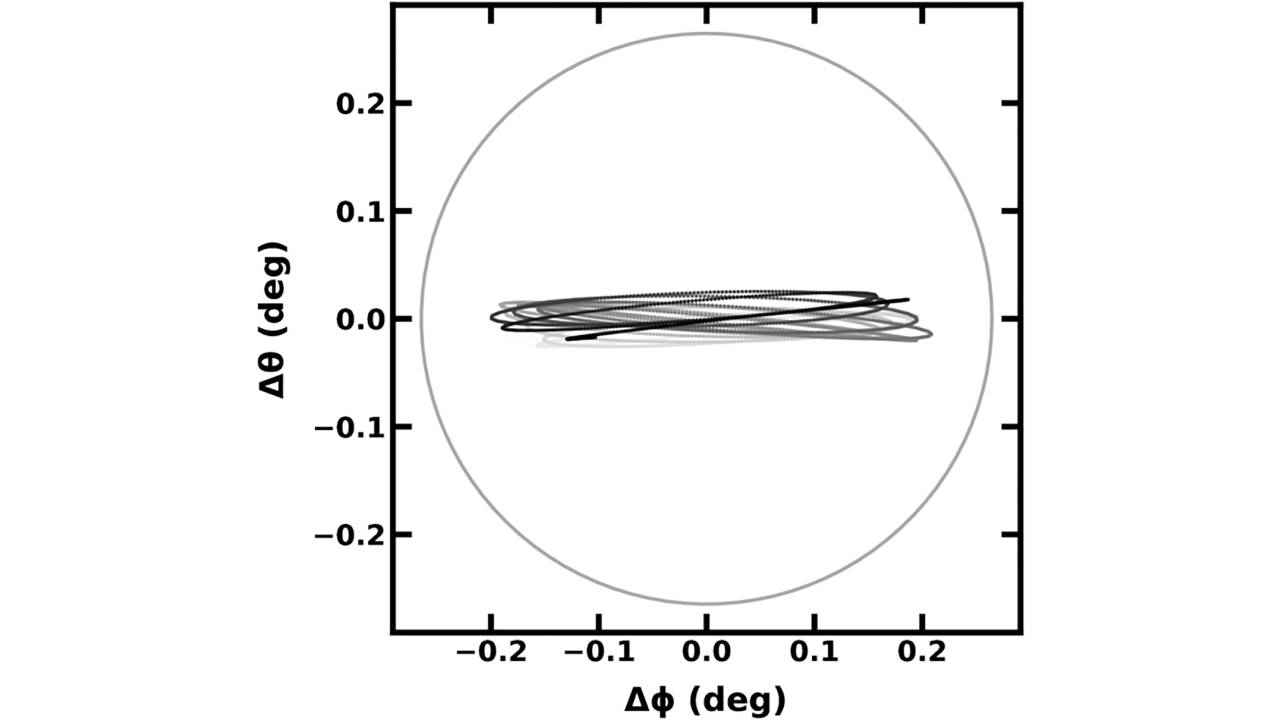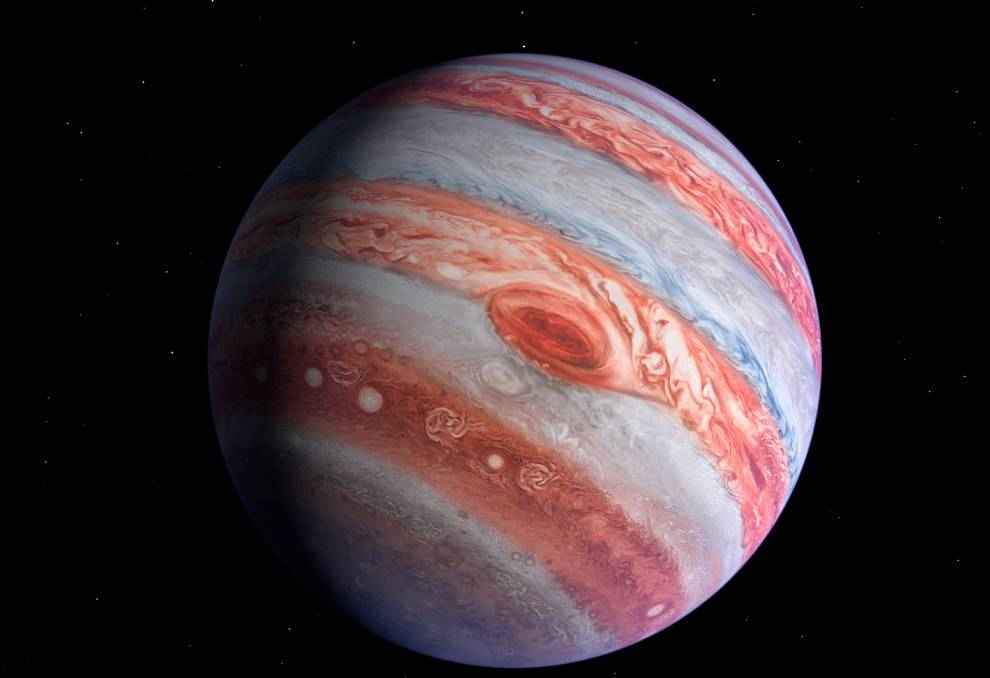Use of machine learning in the study of astronomy: A dusty affair

Researchers working at the University of Utah have conceptualised an ingenious way of protecting the Earth from the wrath of the Sun’s heat as more of it gets trapped in the atmosphere due to the over-accumulation of greenhouse gases. If their concept program is anything to go by, we could soon see dust being launched into space from the moon's surface or a space station orbiting our home planet. Yes, you read that right!
Their idea, which is based on the theory that is used to study planet formation around stars, suggests that we can take a small amount of material, in this case, dust, and launch it into a special orbit between the Sun and the Earth. This would essentially cut down the amount of solar radiation reaching our planet, helping in the mitigation of the effects of climate change.
Commenting on the shield that the researchers are proposing, Sameer Khan, who is an undergrad student at the university and a co-author of the study, said, “Because we know the positions and masses of the major celestial bodies in our solar system, we can simply use the laws of gravity to track the position of a simulated sunshield over time for several different orbits.”
As absurd as it may sound, this theory has scientific evidence backing it. Yes, it is a very distant thought. However, if this is the ultimate solution to save the human race from the catastrophic effects of climate change, then after proper analysis of the side effects of this move, we could actually use it to protect our coming generations.
Link to the research paper – https://journals.plos.org/climate/article?id=10.1371/journal.pclm.0000133
Origins: Meteorites
For the fans of the magazine, no, this is not an origins article about meteorites. A team of scientists and researchers from the Imperial College in London, after conducting a thorough analysis of meteorites, have found that some of Earth’s volatile chemicals, some of which have played an essential role in the existence of life on our planet, have their origins in meteorites.
It may not come as a surprise to many, as in the past, meteorites have been known to be a source of multiple different elements occurring on our planet. However, if we tell you that zinc, which is one of the fundamental elements that we have around us, has its origins in space rocks, then your interest would peak, right? And what if we tell you that the asteroids that are believed to be the carriers of this element come from planets that we have a hard time seeing, like Jupiter, Saturn, and Uranus? Even more exciting, right? Well, this is exactly what the findings of the research study in focus suggest.
Commenting on the same, Professor Mark Rehkämper, said, “About half of Earth’s zinc inventory was delivered by material from the outer Solar System, beyond the orbit of Jupiter. Based on current models of early Solar System development, this was completely unexpected.”
Research studies that were published earlier suggested that most of the materials contributing to the formation of the planet had their origins in the inner Solar System. These materials, in turn, were the sources of the volatile chemicals. However, these new findings suggest otherwise and could be our gateway towards understanding more about the planets far far away.
Link to the research paper – https://www.science.org/doi/10.1126/science.abn1021
Machine learning is here to help
If machine learning and artificial intelligence weren’t already doing enough to amaze us, a recent finding published in a research study led by an undergrad student at the University of Toronto has suggested that machine learning could potentially help us find extraterrestrial life. Once every few years talks about the existence, and the chance of us contacting them takes the scientific community by storm. And, if the suggested theories are anything to go by, then we might see another wave of commentary coming our way about the possibilities of establishing contact or just finding extraterrestrial life.
A team of 17 researchers, including Ma, published a research paper titled “A deep-learning search for technosignatures from 820 nearby stars” in the journal – Nature Astronomy. There, the team has theorised about a machine learning program that would be able to process data sets that contain petabytes of data. Classical techniques that are used till now are not capable of handling such large data sets.
When working on this research project, the team looked through a data set containing 150 TB of data of over 800 stars. This data set had been previously looked through in 2017 using older techniques. During their re-run, they came across several interesting findings, including radio signals that had not been detected in the first place in the 2017 analysis of the same data set. These signals, as published in the materials by the SETI institute, had the following characteristics:
1. The signals were narrow band, meaning they had narrow spectral width, on the order of just a few Hz. Signals caused by natural phenomena tend to be broadband.
2. The signals had non-zero drift rates, which means the signals had a slope. Such slopes could indicate a signal’s origin had some relative acceleration with our receivers, hence not local to the radio observatory.
3. The signals appeared in ON-source observations and not in OFF-source observations. If a signal originates from a specific celestial source, it appears when we point our telescope toward the target and disappears when we look away. Human radio interference usually occurs in ON and OFF observations due to the source being close by.
As of now, as per the researchers, there are two very basic yet important applications of this new ML program and algorithm. The first is that this program will enable a quicker and more effective analysis of data that is collected as a part of various research programs. And if there is a need, then the researchers will be able to re-run their analysis in much shorter periods and potentially discover new information.
Link to the research paper – https://seti.berkeley.edu/ml_gbt/overview.html
“These results dramatically illustrate the power of applying modern machine learning and computer vision methods to data challenges in astronomy, resulting in both new detections and higher performance. Application of these techniques at scale will be transformational for radio technosignature science.”
Cherry Ng, Research advisor and astronomer at SETI Institute and the French National Center for Scientific Research
Satvik Pandey
Satvik Pandey, is a self-professed Steve Jobs (not Apple) fanboy, a science & tech writer, and a sports addict. At Digit, he works as a Deputy Features Editor, and manages the daily functioning of the magazine. He also reviews audio-products (speakers, headphones, soundbars, etc.), smartwatches, projectors, and everything else that he can get his hands on. A media and communications graduate, Satvik is also an avid shutterbug, and when he's not working or gaming, he can be found fiddling with any camera he can get his hands on and helping produce videos – which means he spends an awful amount of time in our studio. His game of choice is Counter-Strike, and he's still attempting to turn pro. He can talk your ear off about the game, and we'd strongly advise you to steer clear of the topic unless you too are a CS junkie. View Full Profile





